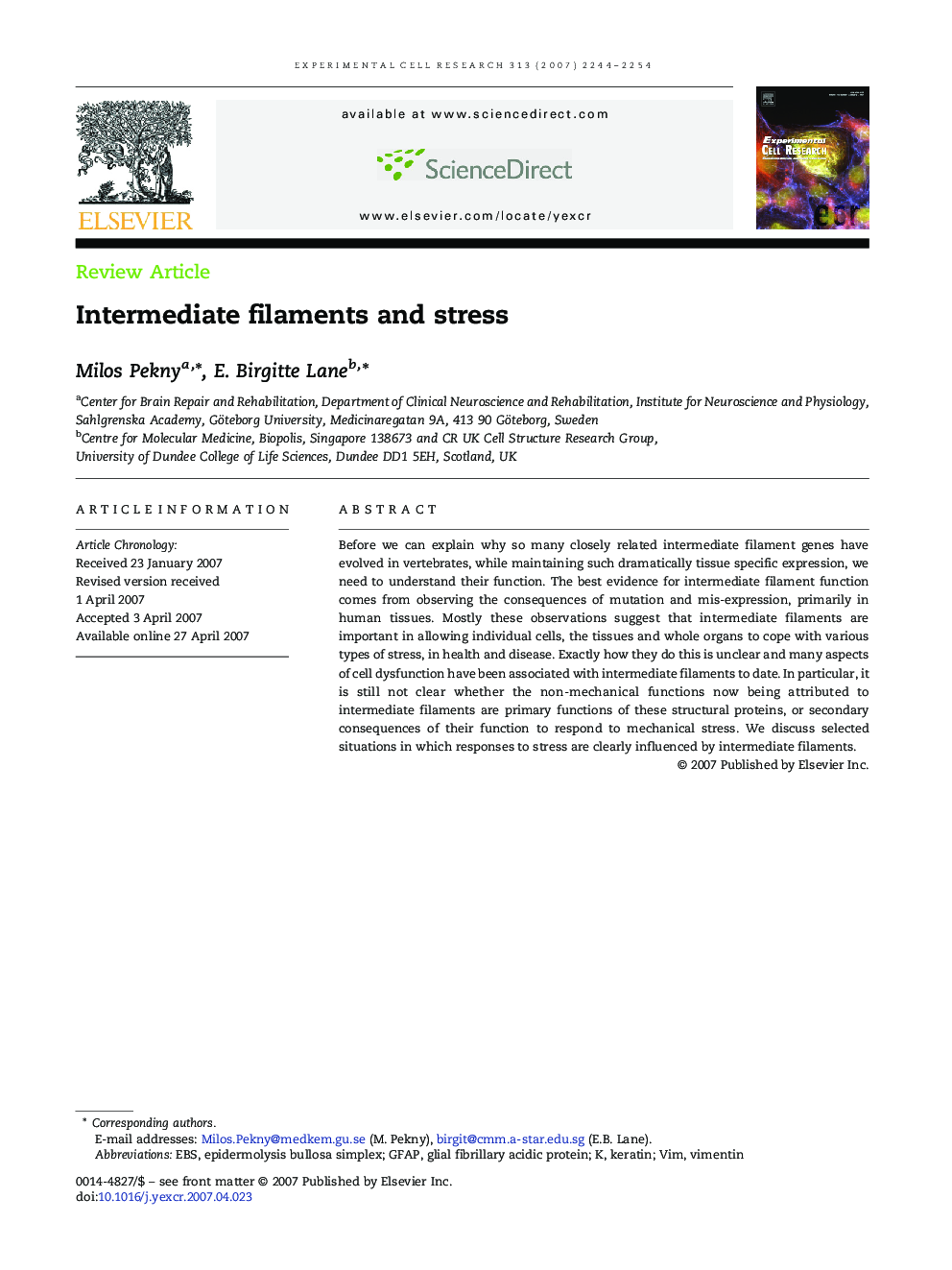| Article ID | Journal | Published Year | Pages | File Type |
|---|---|---|---|---|
| 2133083 | Experimental Cell Research | 2007 | 11 Pages |
Before we can explain why so many closely related intermediate filament genes have evolved in vertebrates, while maintaining such dramatically tissue specific expression, we need to understand their function. The best evidence for intermediate filament function comes from observing the consequences of mutation and mis-expression, primarily in human tissues. Mostly these observations suggest that intermediate filaments are important in allowing individual cells, the tissues and whole organs to cope with various types of stress, in health and disease. Exactly how they do this is unclear and many aspects of cell dysfunction have been associated with intermediate filaments to date. In particular, it is still not clear whether the non-mechanical functions now being attributed to intermediate filaments are primary functions of these structural proteins, or secondary consequences of their function to respond to mechanical stress. We discuss selected situations in which responses to stress are clearly influenced by intermediate filaments.
